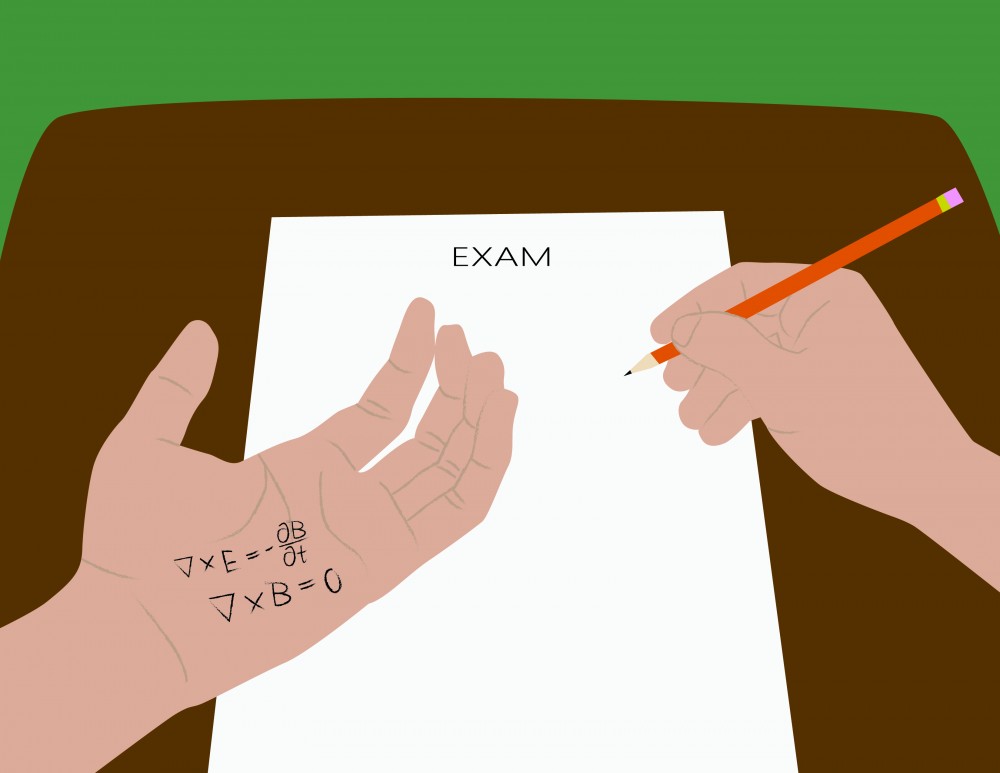In an effort to better understand academic integrity at the University of Minnesota, members of the University Senate are looking at ways colleges across the University system can prevent cheating.
Starting this fall, the Student Academic Integrity Committee will review how schools within the University handle cheating, plagiarism and other forms of scholastic misconduct. The efforts, launched at the committee’s meeting last week, could take several years to complete.
“[We’re] trying to find out what people are doing,” said Jeffrey Schott, a professor of chemical engineering and chair of the committee. “This is a longer term effort that we’re just beginning.”
Colleges have their own ways of handling matters of academic dishonesty, Schott said, which can result in significant differences at the University.
The committee will meet with various administrators to gauge the prevalence of incidents, the challenges schools face when upholding academic integrity and the resources needed to improve academic integrity.
Last year, there were 387 reports of scholastic dishonesty on the Twin Cities campus, according to data by the Office for Community Standards. The number of reports has remained fairly consistent over the past five years.
Scholastic dishonesty can include plagiarism on a paper, sharing answers on homework or cheating on an exam. Sanctions range from partial credit on an assignment to automatic failure of a course.
There are many “possibilities of dishonesty” for students, said John Hourdos, director of the Minnesota Traffic Observatory and member of SAIC, because academic programs have their own way of running classes, managing grading systems and administering tests.
As a result, professors often use different approaches to prevent cheating.
Christopher Douglas, a professor in the College of Science and Engineering, teaches organic chemistry, a class with several hundred students.
A few years ago, Douglas caught a student attempting to hire someone else to take a test. Douglas now requires students show their U Card or photo ID when turning in exams.
Because grades are curved, Douglas said, cheating affects the entire class.
“It’s something that we take seriously and we are looking out for,” Douglas said. “[Students] are not just cheating themselves, they’re cheating their classmates as well.”
Liza Meredith, who teaches Psychology 1001 in the College of Liberal Arts, said cheating is a “mild problem” in her class.
“It’s not overly severe because of the steps we’ve taken to try and make it more difficult to cheat,” Meredith said.
Exams in the course are randomized, Meredith said, helping to ensure students sitting next to one another don’t get the same questions on the same test.
For essays, topics are changed every year and instructors use the Turnitin software, which compares papers to other published work and checks for plagiarism, she said.
To prevent misconduct, the Office for Community Standards encourages instructors to routinely change tests, provide expectations for group work and discuss the importance of academic integrity with students, among other practices.
But members of SAIC say there’s not much known about the best practices to prevent cheating — something the review aims to determine.
The review is the first time the committee has taken on such an effort, Schott said. He sees the committee’s review as an opportunity to evaluate what’s working and what’s not.
“Our hope is we can find some people that have systems that work well for them,” he said, “From this we can distill some best practices to suggest to other folks.”
Part of the process is simply trying to gather information from across the University in one place. Schott said he doesn’t know what the committee will find.
“We’re not even sure what we’re going to end up with,” Schott said. “It’s a big place.”














